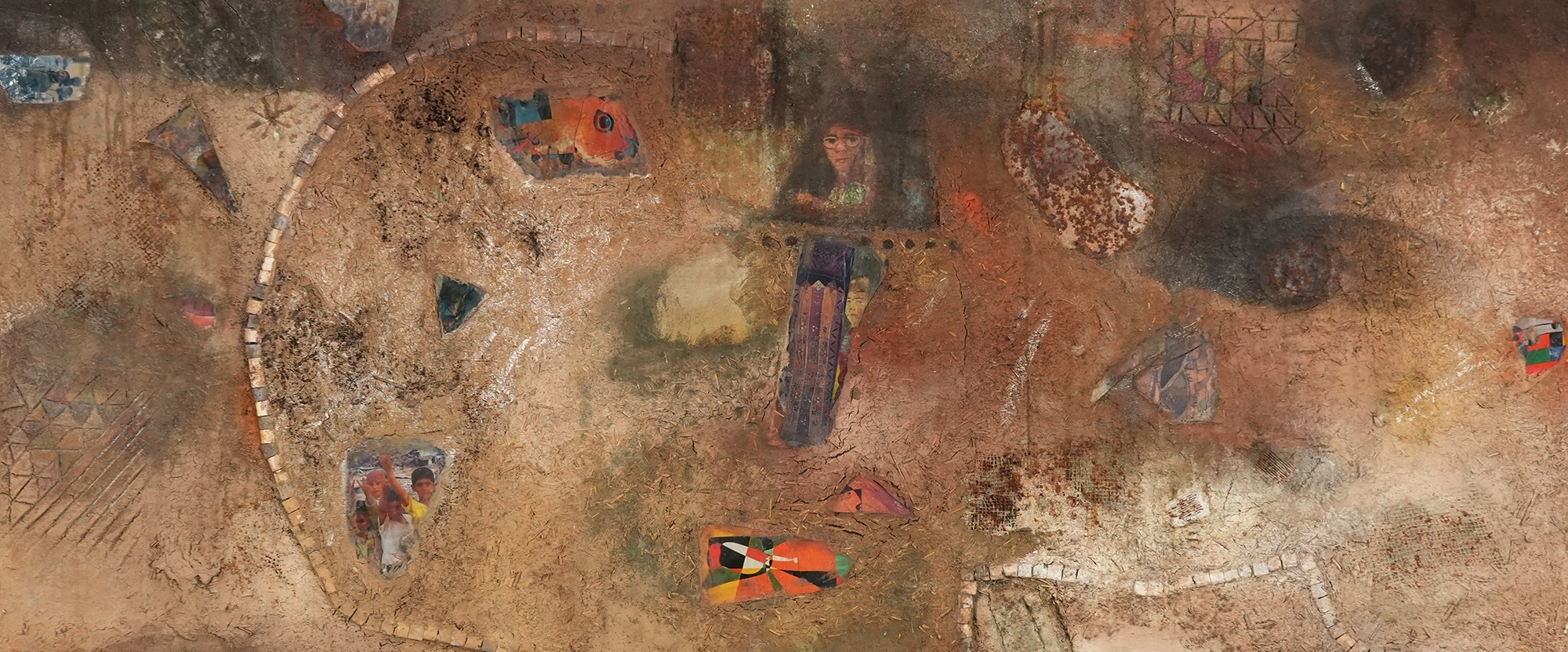

20/10/2025 General News, Latest News
This Wednesday, October 22nd at 12pm, our first Modern and Contemporary Middle Eastern Art auction will commence. Comprising 20 lots of the highest quality, we are proud to provide a platform to celebrate the work of some of the greatest artists of the late 20th and 21st centuries, including Ismail Fatah (Iraqi, 1934 - 2004), Sliman Mansour (Palestinian, 1947 -) and Louay Kayali (Syrian, 1934 - 1978). The sale was curated by George Al-Ama, who through his work as an academic, art advisor, and founder of the Dar Al Sabagh Diaspora studies and Research Centre has become an authority on contemporary Middle Eastern art.
Born in the small village of Birzeit in 1947, Sliman Mansour is recognised as of the greatest living Palestinian artists. His contributions to Palestinian art go beyond his own creative output, having held numerous roles in artistic institutions also; serving as head of the League of Palestinian Artists (1986-1990), director of the Al-Wasiti Art Center in East Jerusalem (1996-2003), and as a member of the founding board of directors of the International Academy of Art Palestine, established in Ramallah in 2004. Mansour’s oeuvre is diverse, across traditional media like oils but also branching into sculpture and producing cartoons. One area of Mansour’s work has become especially well known however – his pieces created using natural materials, most notably mud. Lot 15 in our upcoming Modern and Contemporary Middle Eastern Art Auction, Promenade to Beit Dajan is an exceptional work of this type by Mansour, produced in 1993.
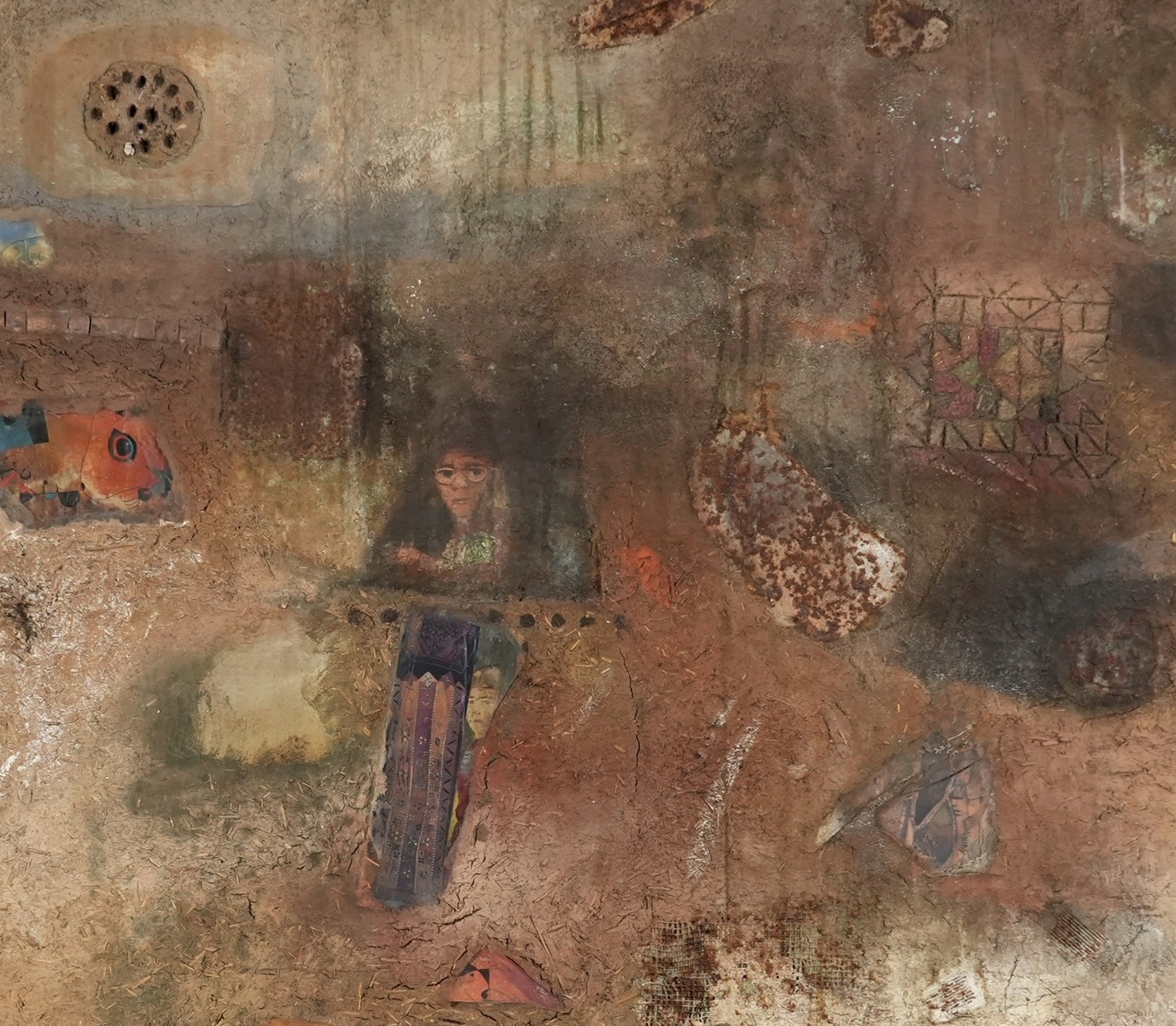
Crucial to the history of this stunning work is the New Visions art collective. The group was co-founded by Mansour himself during the First Intifada in 1989, and was centred around himself and three other Palestinian artists: Vera Tamari, Tayseer Barakat, and Nabil Anani. This group was defined by their decision to boycott Israeli-made materials that were imported, including those most commonly used in artistic practice (such as paint and paper). This led to a significant emphasis on what was readily available, and local to each artists’ home – leading to a wide range of works produced using materials like straw, leather and henna, with mud in particular emerging as a feature of Mansour’s work. In a piece such as Promenade to Beit Dajan, the use of mud takes on even greater significance, the title and subject leading it to become a work that is ‘connected to the land’ in the most literal sense.
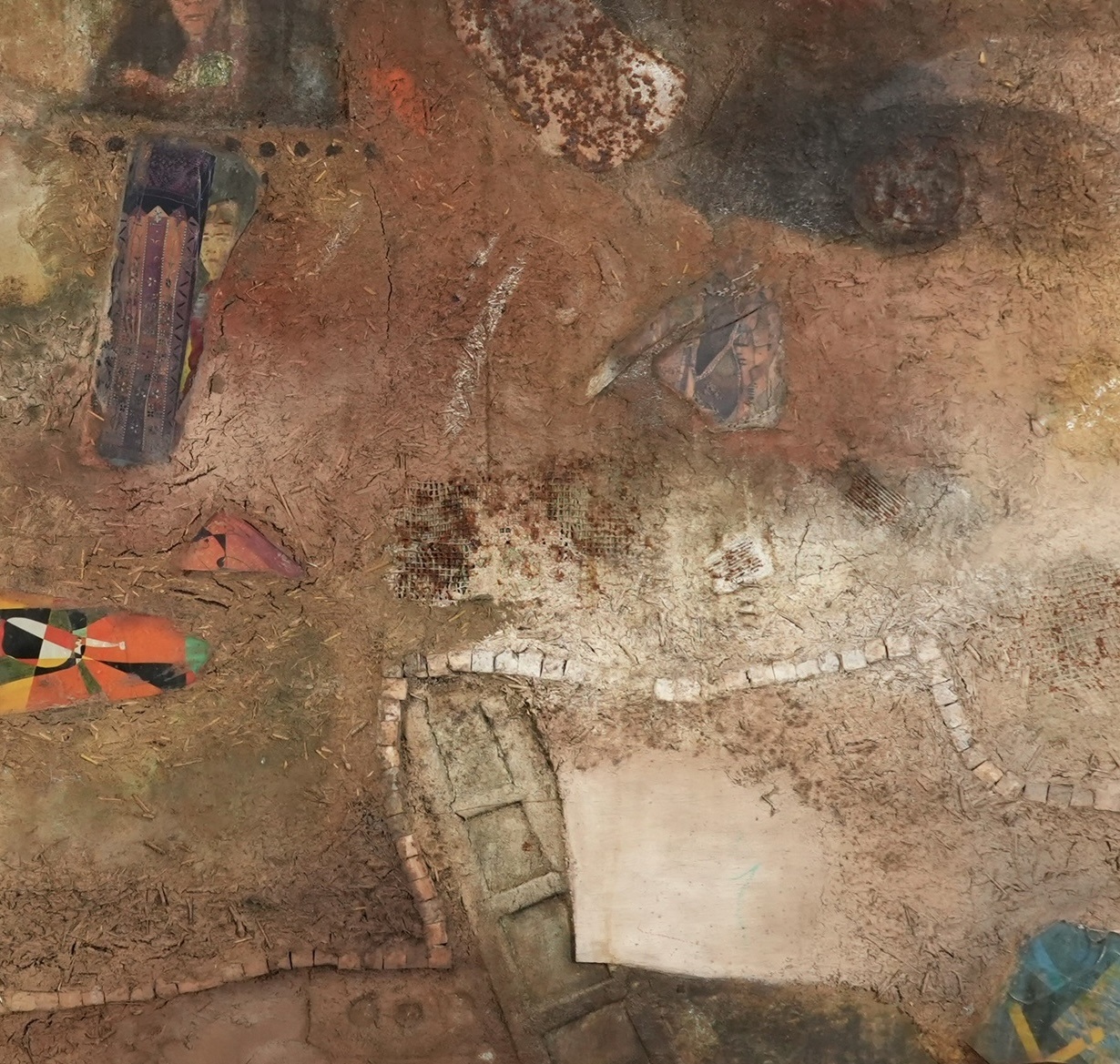
The medium is also of considerable personal importance to Mansour himself. Proud of his humble, rural origins in Birzeit, Mansour recalls his childhood creating vessels (such as those for cooking, or beehives) out of the earth with his grandmother. This intimacy with the material to create objects for everyday use becomes clear in the sculptural sections of the work, shaped to evoke the forms of people and objects.
But these close personal ties with mud as a medium are not solely rooted in Mansour’s past. Visible in this work are small inclusions created by his children, negotiated in exchange for pocket money in their youth, and functioning as mementos of their childhood around their father’s art studio spaces. The location of these pieces can be determined on the reverse, which displays small sections distinct from the primary wooden plane. Other additions include fragments of works by other artists such as Joan Miró and Mansour's fellow New Visions member Nabil Anani. The properties of mud itself as an artistic material are also crucial for this, when dried staying firm enough to hold these small fragments as well as numerous other inclusions, formed from glass and other materials. It becomes solid enough to work as a base for applied colour, and when soft can manipulated sculpturally and incised with further detail.
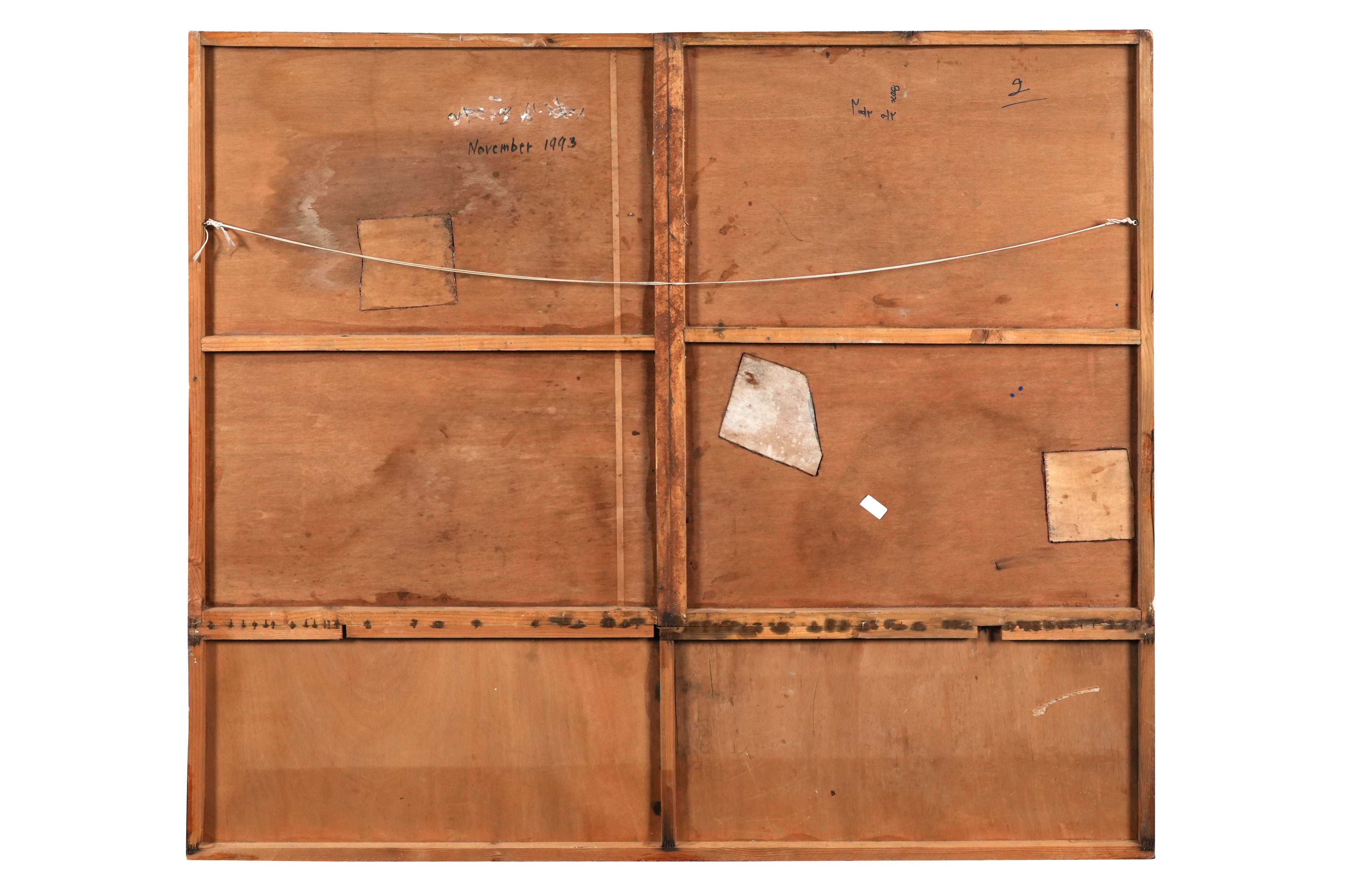
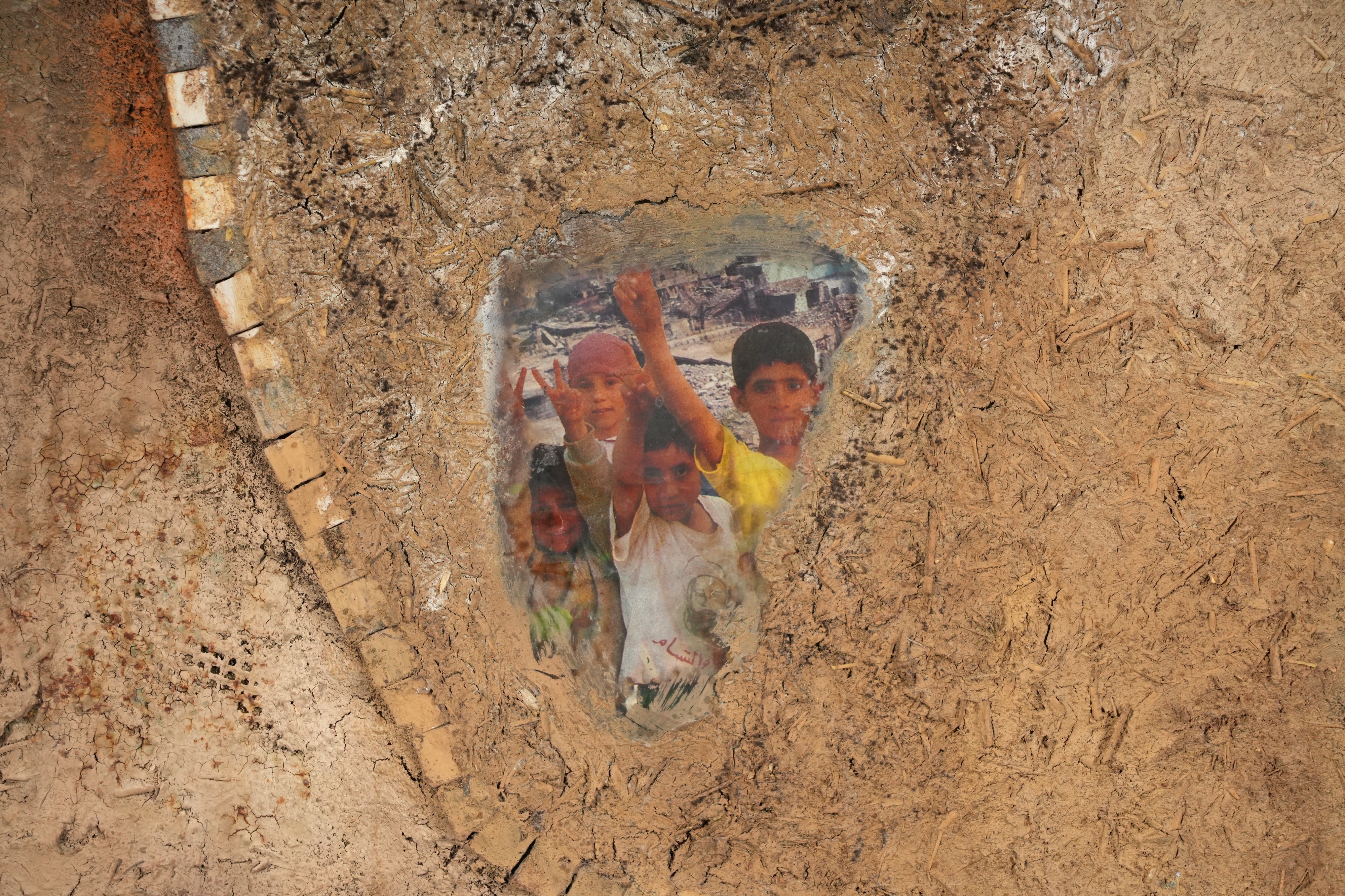
The size of Promenade to Beit Dajan, measuring 119cm x 236cm, is also remarkable given its year of production, 1993. At this time, Mansour was himself covertly transporting his work across Palestine, meaning that the scale of his works was entirely confined to the dimensions of his small Volkswagen Polo. In the years following, Mansour himself noted that this size was the greatest which his vehicle would allow, making Promenade to Beit Dajan an exceptionally rare example of a large-scale early mud period work.
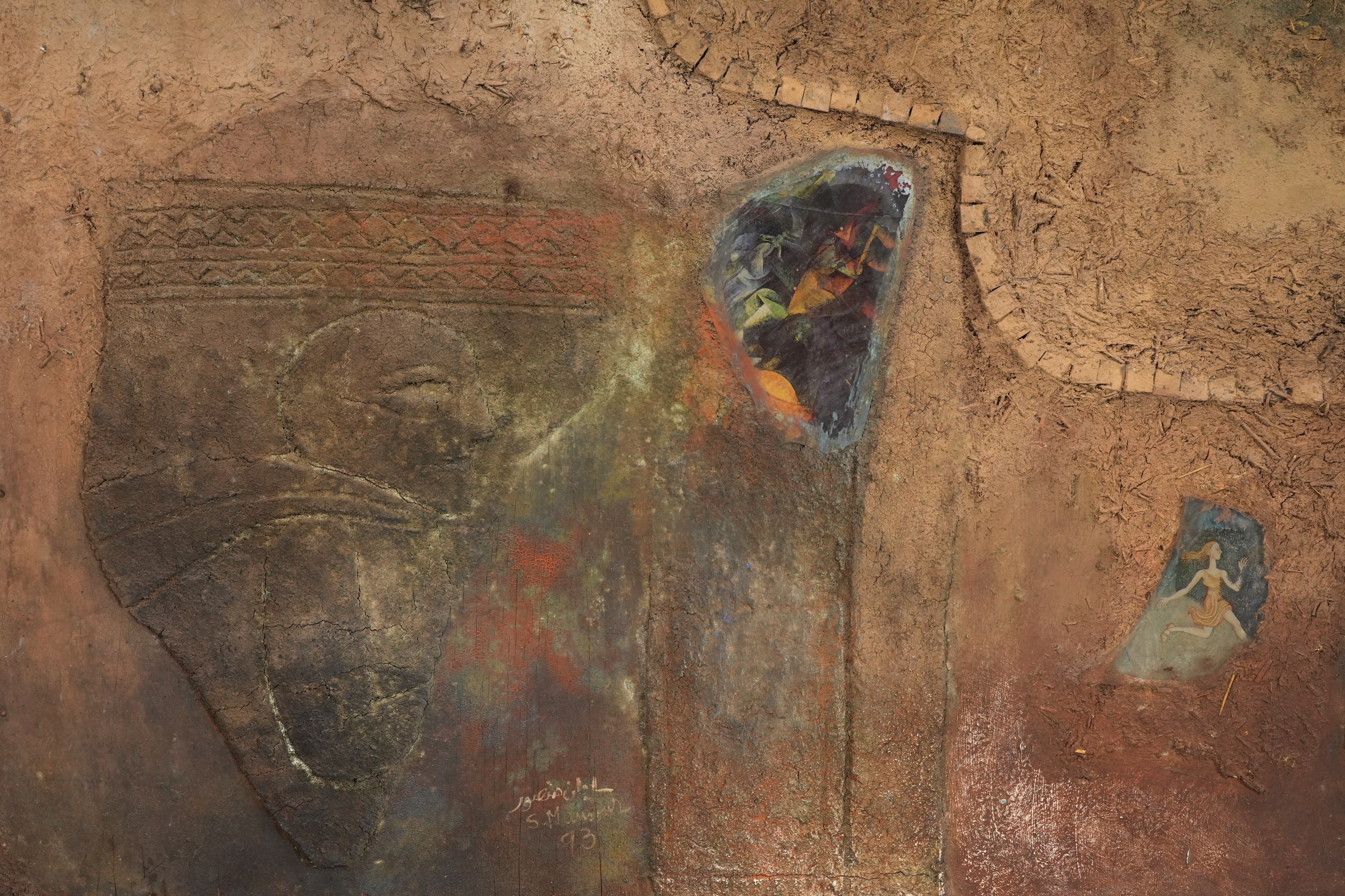
One final detail of this piece which must be highlighted is the presence of a glass inclusion containing a scene of figures surrounded by orange trees. This is an element fundamental to the work’s setting in Beit Dajan. The village was once one of Palestine’s wealthiest, known known for its lush groves of orange trees, but since its occupation in 1948 has become part of Tel Aviv. The title Promenade to Beit Dajan evokes lost rituals of regular seasonal trips to the village for the harvest, once so prominent a tradition in Palestinian communities. This history has led the orange to become a vital symbol across Mansour’s work: rich with emotional significance for Palestine’s agricultural heritage, and nostalgia for the days before Beit Dajan was occupied.
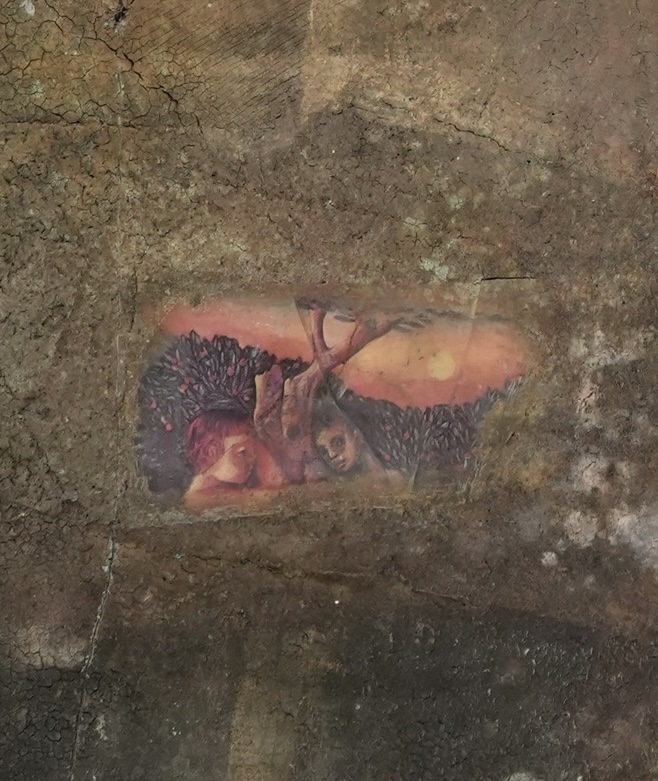
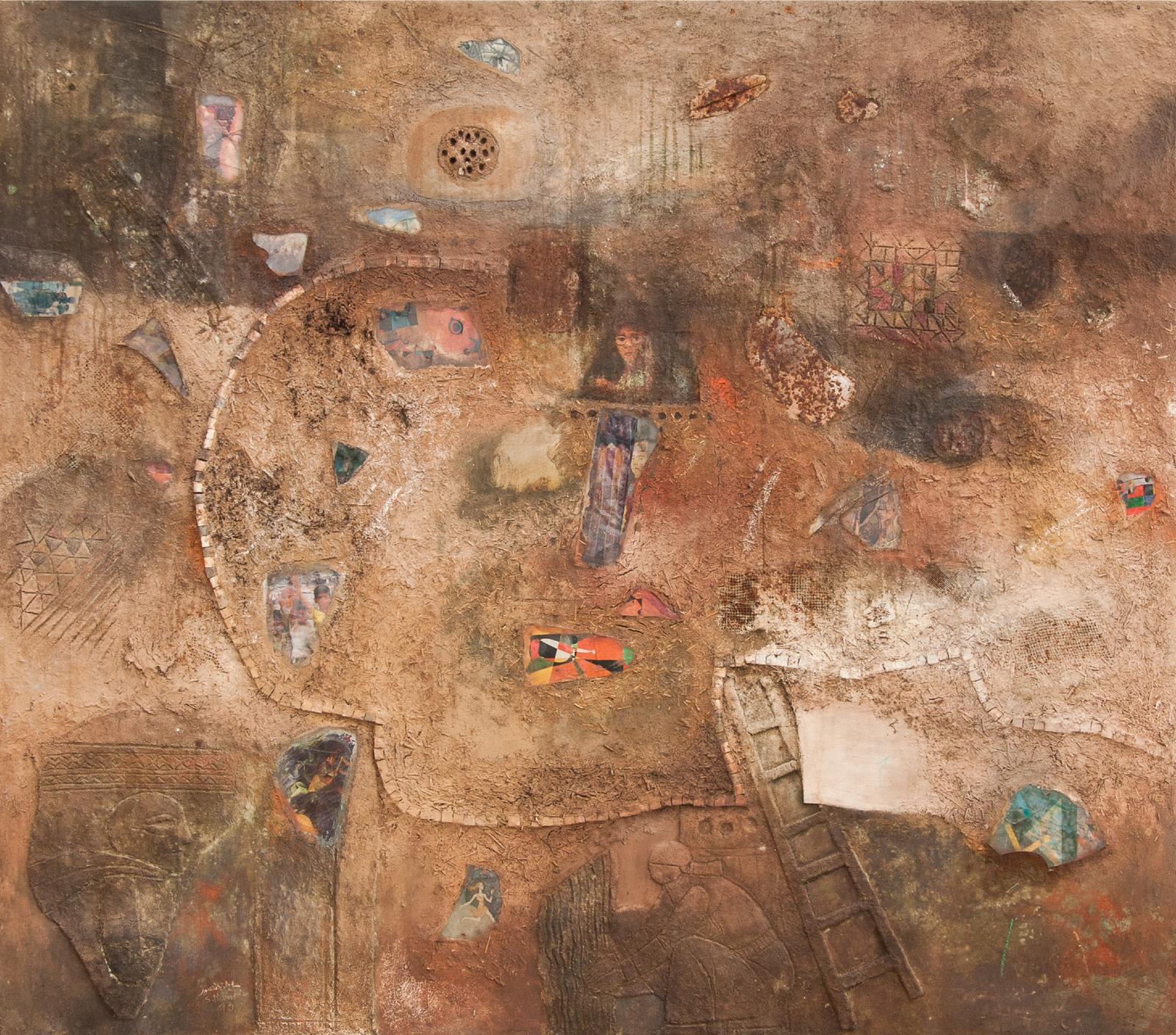
Modern and Contemporary Middle Eastern Art is on view at 188R Hammersmith Road between October 15th – 17th and 20th – 21st , 10am – 4pm. For enquiries regarding the sale or viewing times, please email info@azcaauctions.com